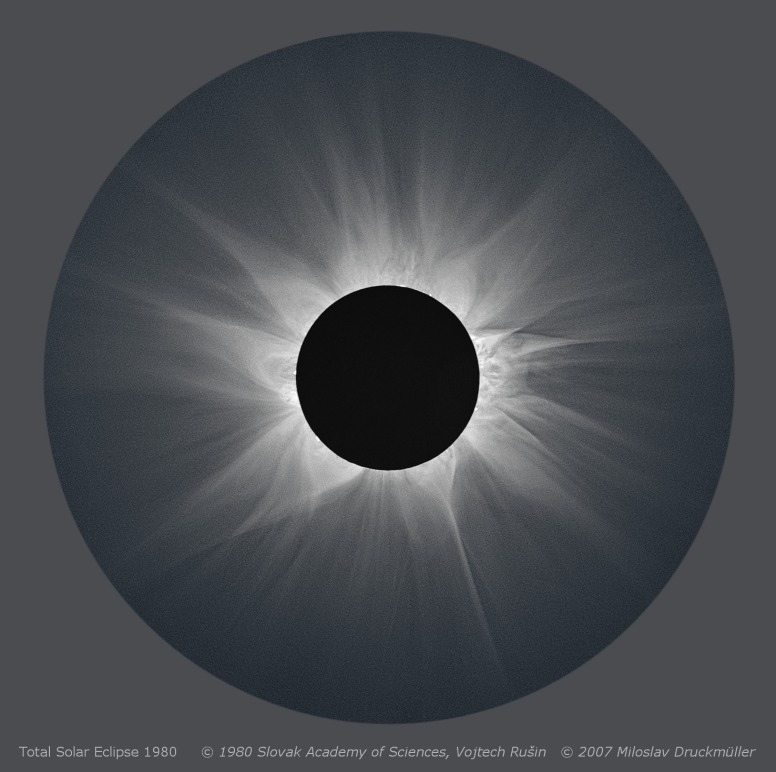| Image | Tse1980rd_c1.jpg |
| Date | 16. 02. 1980 |
| Time | Second contact 10:12:54 UT, third contact 10:15:38 UT (observed times)
Eclipse duration 2 min 44 s
Second contact 10:12:54 UT, third contact 10:15:35 UT (calculated times)
Eclipse duration 2 min 41 s |
| Place | Near Jawalgera village, Raichur District, Karnataka State, India |
| Coordinate | N 15° 50' 57'', E 76° 52' 52'', altitude 380 m |
| Conditions | Clear sky, windless. Altitude of the sun above the horizon: 55° |
| Optics | 200/3040 mm horizontal telescope and 300 mm Jensch coelostat
Yellow Schott GG-14 filter |
| Film | Orwo NP 27 (18×24 cm glass plates) |
| Exposure | 1/60 s, 1/100 s, 1/50 s, 2 s, 11 s |
| Processing | Composition of 4 images (1 plate not used)
Image processing by Miloslav Druckmüller |
| Scanner | Epson Perfection V750 Pro (6400 dpi resolution, 4× scanned each plate) |
| Software | PhaseCorr 4.0, FilmCMP 2.0, Corona 4.0, Sofo ACC 6.0 |
| Note | The graph above the table shows the average values of the relative number of sunspots, in which the red arrow indicates the time of 1980 eclipse. Graph was created according to data from Sunspot Index Data Center, Brussels. |
| Orientation | The image has standard orientation i. e. Solar N top, E left |
| Copyright | © 1980 Slovak Academy of Sciences and Vojtech Rušin, © 2007 Miloslav Druckmüller |

